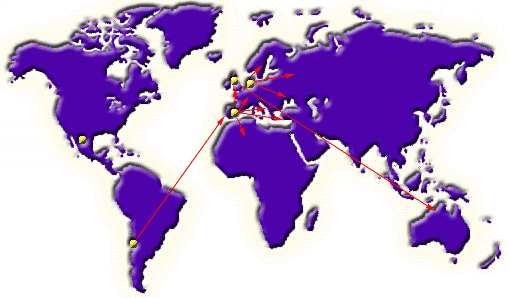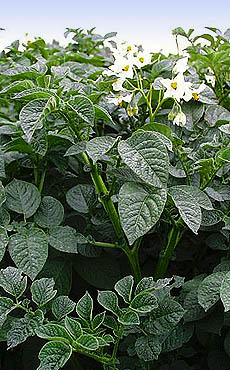Potato
Solanum tuberosum Once upon a time, someone brought to Europe a plant which had been cultivated by South American Indians for centuries before the European expansion to the West. |
It was about 60-80 cm high; had white, pink or violet blossoms; and generated in its subterranean part up to 50-60 tubers whose weight varied from 2-3 g to 2-3 kg. The one who brought it surely didnât have the slightest idea of its forthcoming expansion across fields in Europe and, subsequently, in the whole world.

This plant was the potato, which contains the poisonous glycoalkaloid solanine in all its parts but mostly in the blossoms and in the fruit. Its content is extremely high when tubers are unripe or green as a result of incorrect storrage but they cannot cause poisoning because solanin decomposes when boiled.
Only the fruit,
blossoms, seeds, sprouts, and sun-greened tubers may be dangerous. They can bring about stomachache, nausea and vomiting, dizziness, psychic depression, breathing disruptions, irregular pulse and even coma in the case of high dose intake and lack of therapy. Bearing in mind the application of the potato in our everyday life, we should not expect it to have found application in medicine. |
|

